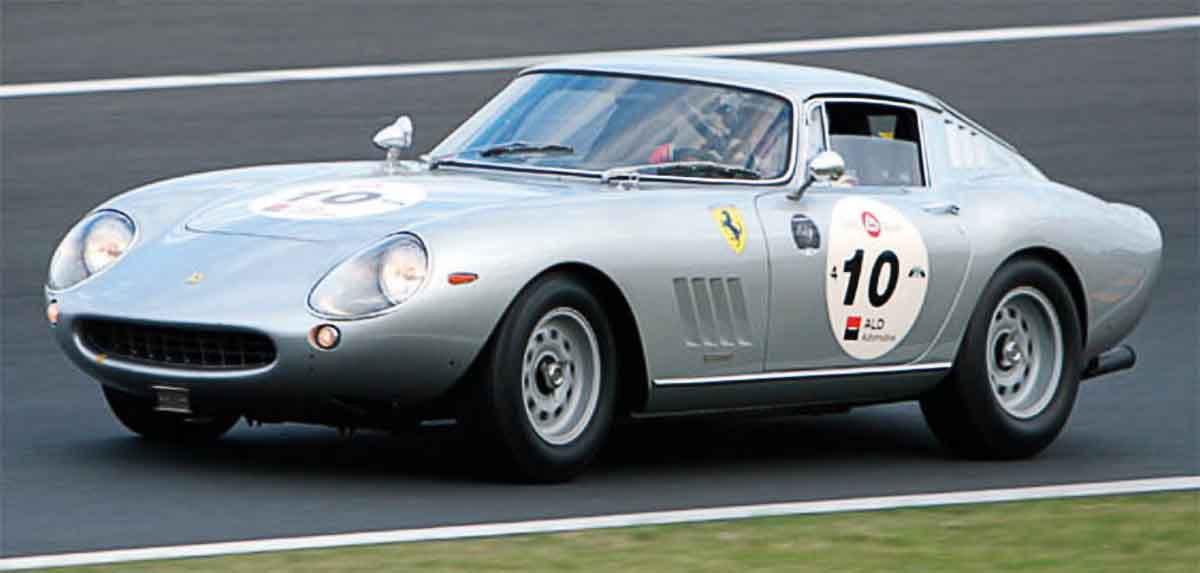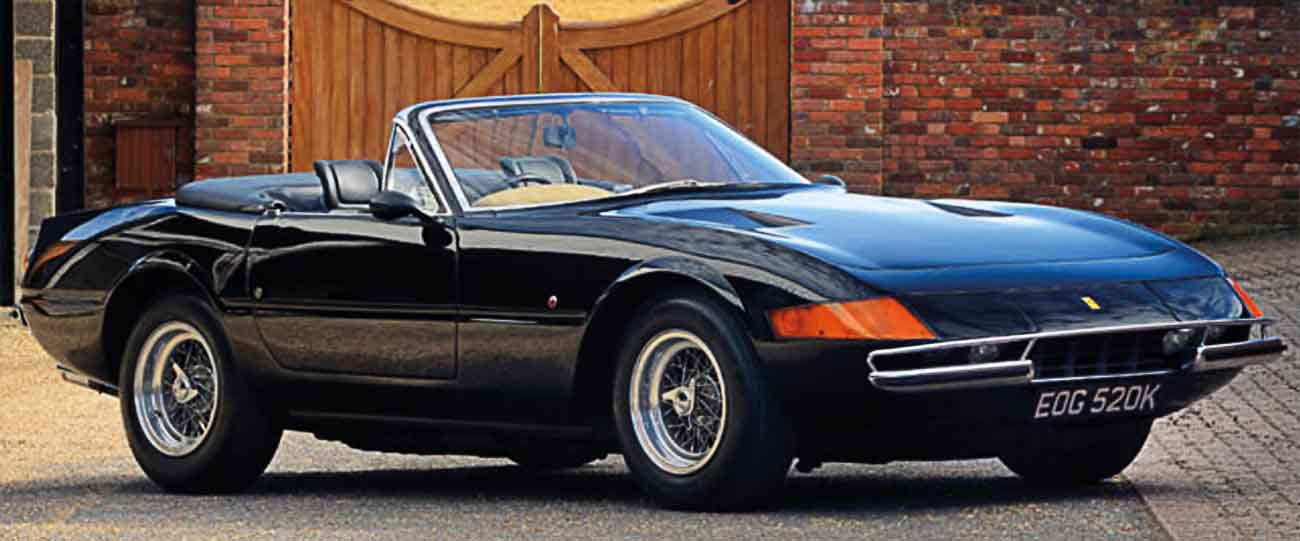
Great Marques—The Ferrari Story
The prancing horse of Ferrari has become a fixture at the very summit of automotive achievement. Enzo Ferrari’s steadfast approach to speed ensured that his team became the most successful of them all in Formula 1 racing, and his company has created some of the fastest and most desirable cars ever made.
“The most exciting projectile we have ever been fortunate enough to handle.”
AUTOCAR MAGAZINE ON THE FERRARI 365GTB/4 DAYTONA, SEPTEMBER 1971
ENZO FERRARI WAS A RACING DRIVER from Modena in northern Italy. He became a works driver for Alfa Romeo in 1920, then ran Alfa’s official racing team under his Scuderia Ferrari banner from 1933. When Alfa decided to bring its racing back in-house, Ferrari was appointed racing manager, but he left instead to found his own company. Auto Avio Costruzione, which soon established itself in Maranello, where Ferrari is still based today.

All-independent suspension, four camshafts, and six Weber carburetors helped to make this model a fearsome road/race machine
After some success with Fiat-based racing cars, Ferrari launched the first car under his own name, the 125S, which went on sale in 1947. Ferrari’s cars won the Mille Miglia and Targa Florio in 1948, and the prestigious Le Mans 24-hour race in 1949. Their first win in Formula 1 Grand Prix racing came in 1951, and Alberto Ascari won the F1 World Championship for Ferrari in 1952 and 1953. From there, Ferrari became a fixture in F1 racing, winning two more World Championship titles in the 1950s with Juan-Manuel Fangio and Mike Hawthorn, and another in 1961 with American driver Phil Hill. At the same time, Ferrari won at Le Mans six times in a row to seal its place as the greatest racing team motor sport had ever seen.

Notionally, Dino was a separate, junior Ferrari marque, but this delectable V6, mid-engined two-seater was every inch the thoroughbred, with superb handling.
But success did not come easily. Ferrari was driven by winning and did not tolerate failure. Detailed debriefs in the company boardroom followed every lost race, and often saw Ferrari hurl broken components across the table at startled team members. Key engineers and star drivers were often treated with arrogant disregard. Paying customers were often treated with similar disdain. Ferruccio Lamborghini, legendarily, was so incensed by Ferrari’s dismissive attitude that he started his own car company, which became one of Ferrari’s biggest road car rivals. True or not, it all added to the mystique of the company and the man behind it. While Enzo Ferrari’s real interest was racing, his company constructed an extraordinary reputation for its road cars.

Fewer than 130 Daytona Spyders were ever produced by Ferrari, and are highly prized by enthusiasts. Cashing in on this, many hardtop 365GTBs have since been modified like this one, with the roof removed to give the appearance of a Spyder.
The 250 family encompassed everything from race winners to civilized GT cars, and later models, such as the 275GTB and 365GTB/4 Daytona had unmatched speed and glamour. Even then, Ferrari was too small a company to survive as an independent and an approach from the US giant Ford very nearly led to a takeover, but Ferrari pulled out at the last minute and eventually did a deal with Fiat, which took a 50 per cent shareholding in 1969. This gave Ferrari the stability to branch out into a wider range of road cars, building on the success of the delectable 206/246 Dino to produce a profitable line of middleweight, mid-engined sports cars, beginning with the 308GTB in 1975. The top-end, high-performance machines also adopted mid-engined layouts in the 1970s 365BB and 512BB supercars, and later in their successors, the Testarossa and 512TR.
On the race track Ferrari’s force had waned, but it returned to the front of the Formula 1 grids with Austrian driver Niki Lauda, who won F1 world titles in 1975 and 1977, and there was another title for Ferrari in 1979 with South African Jody Scheckter.
After Enzo Ferrari’s death in 1988 Fiat took a 90 per cent shareholding in the company, and Ferrari produced more cars to higher levels of quality than ever before. But the prancing horse would suffer another lean spell in Formula 1, until the arrival of driver Michael Schumacher and engineer Ross Brawn in 1996. They secured five driver’s titles and six constructor’s championships between 1999 and 2004, before Kimi Raikkonen added another driver’s title to Ferrari’s record in 2007.
In 2015 Ferrari was separated from its Fiat parent, and now faces the future as an independent company with what is said to be the world’s strongest sports-car brand, valued at a staggering $9.8 billion.
It is a quote. The Classic Car Book – The Definitive Visual History 2016




